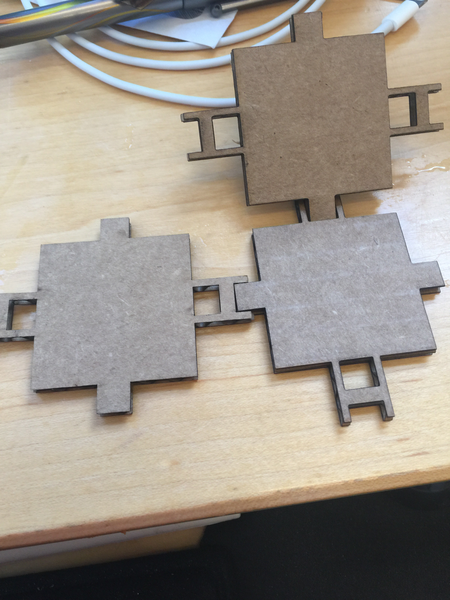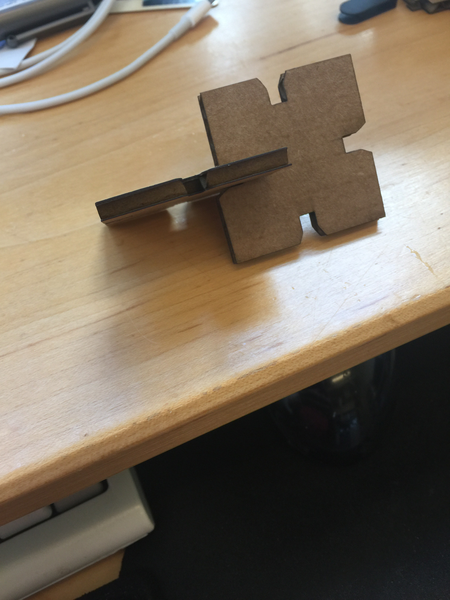

When I started on this, I had the goal of making a spacially-oriented game for two players. Players would take turns placing tiles with their color on it. Each tile could be placed one of two ways: it could snap into place next to another tile to be a "ground" piece (like a jigsaw puzzle, although the specific locking mechanism would likely be different), or it could be placed on its side, like a "wall".
This drove out an interesting design challenge: designing a square tile that could support being attached either at a 90-degree angle or a 180-degree angle from the same joint.
I've never used any 3D modeling or CAD software before. I started using Rhino, which many of my friends and classmates used, but coming from a background in programming I quickly found myself wanting something parametric (and not wanting to boot into Windows for Rhino + Grasshopper).
I loved Antimony, but ran into a lot of difficulty when trying to export to the actual laser cutter software. I never really got Fabmodules working; in Windows, I spent a lot of time trying to figure out howt o properly import and trace from Antimony. Specifically, I didn't realize that STL files weren't the way to go, and then when dealing with PNG I had major scale issues, resulting in a bunch of test prints that were comically small.




After that, I printed out 6 test tiles that can be arranged in a 2D plane or constructed to form a cube. The fit for pieces laid end-to-end wasn't particularly robust, which I attribute partly to my struggles with Antimony, and partly to poor design / my inexperience in creating a more robust locking mechanism while still allowing for a 90 degree joint.
A bout of sickness prevented me from doing another revision on the design, printing out a large enough group of tiles to actually play the game, or cutting vinyl stickers for the different pieces for the two players, but those are both obvious points of further development.

